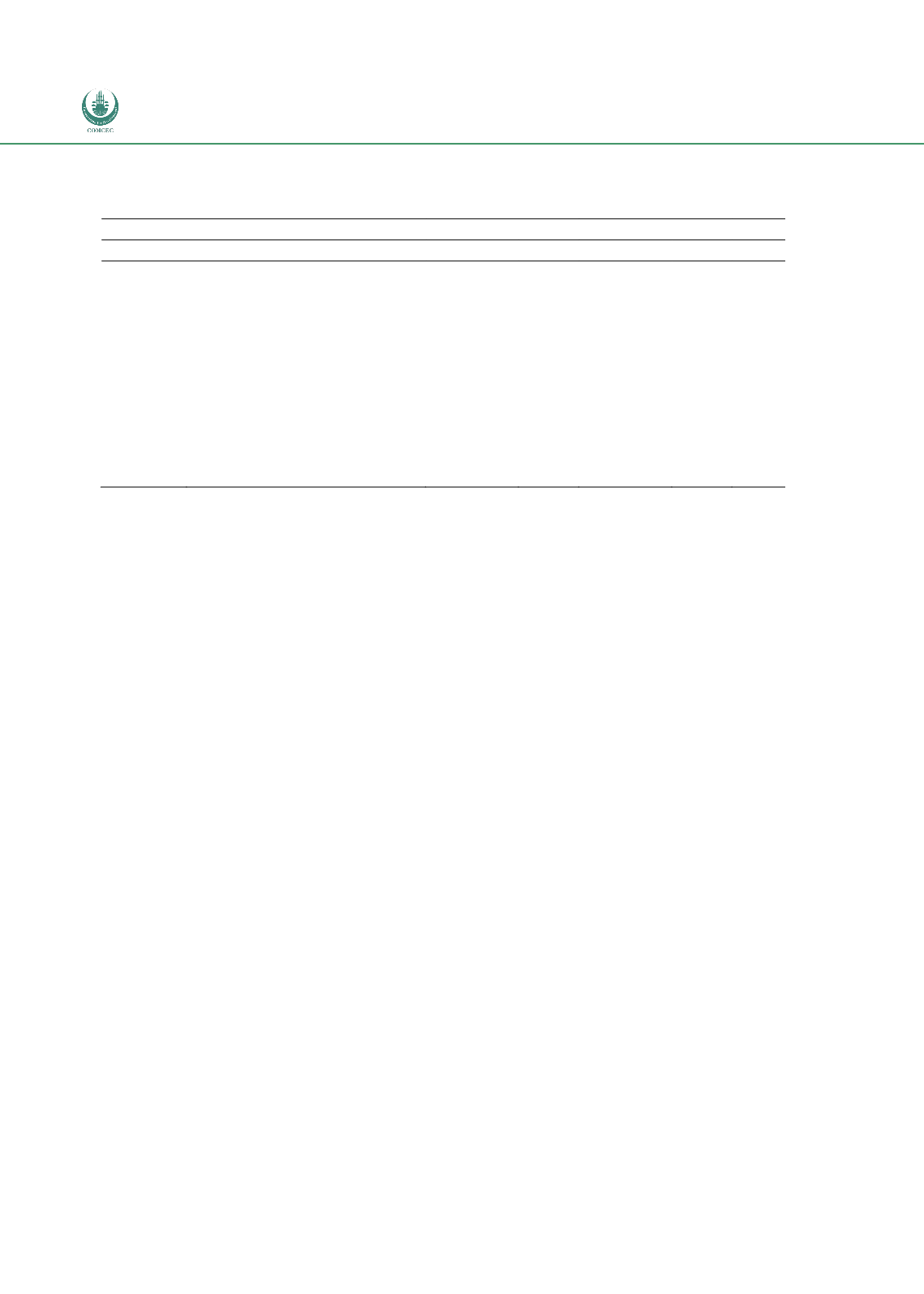

Preferential Trade Agreements and Trade Liberalization Efforts in the OIC Member States
With Special Emphasis on the TPS-OIC
180
Table 56: Top 10 TPS-OIC Countries exported products to the UAE 2010 & 2011 (1000s of USD
Product
Product Name
2010
2011
MFN
Imports
Share
Imports
Share
711319
Articles of jewellery
2,253,478 16.79% 2,388,256 16.40%
5
271011
Light petroleum oils
2,207,030 16.44% 2,042,968 14.03%
5
852812
Reception app. for television
812,314
6.05%
794,894
5.46%
5
271121
Natural gas
761,688
5.67%
777,184
5.34%
5
721420
Bars & rods of iron/steel
658,878
4.91%
768,468
5.28%
5
271019
Petroleum oils
437,862
3.26%
793,950
5.45%
5
151190
Palm oil
409,841 3.05%
437,301
3.00%
5
710812
Gold (incl. gold plated)
448,800 3.34%
292,536 2.01%
0
271111
Natural gas, liquefied
87,233
0.65%
632,154
4.34%
5
100630
Semi-milled/wholly milled rice
298,256
2.22%
282,291
1.94%
0
Grand Total
8,375,380 62.38% 9,210,003 63.24%
Source: Comtrade using WITS, tariff data from TRAINS database
5.5.
THE FAST TRACK TARIFF REDUCTION SCHEDULE
As we have seen, the level of liberalisation in the PRETAS with respect to the obligatory liberalisation
schedules is relatively modest. Even for those countries that do not have trade agreements with the
existing members, the mandatory liberalisation effort alone is unlikely to directly generate important
effects in terms of impact on trade and therefore stimulating economic activity. Nevertheless, Art. 4
of the PRETAS encourages members that want to do so to adopt a voluntary Fast Track Tariff
reduction. The idea was to provide, for those members in a position and willing to do so, a way of
adopting additional levels of commitment. This implies that members have alternative ways of
furthering the extent and degree of integration within the auspices of the TPS-OIC.
An interesting characteristic is that the Fast Track takes the form of an alternative liberalisation
schedule to the mandatory one and does not just simply encourage members to increase their
liberalisation commitments. Members who want to increase their commitments must follow this
specific route that, as we will see, it is an enhanced and deeper liberalisation schedule, which remains
more within the spirit of the Enabling Clause than Art.XIV of the WTO. In contrast to Art.3 of the
PRETAS that, as we have seen, establishes a positive list of products to be liberalised; Art. 4 defines
the criteria that members will need to follow to define a negative list of products that will not be
liberalised. As a consequence, the default will be that all products will experience some reduction
except those defined in the negative list.
In terms of the liberalisation schedule, according to Art. 4, excluding tariff lines with tariffs of 10%
and below, the negative lists should not exceed:
•
25% of all HS tariffs lines for members whose average tariff is 20% and above

















